Chapter 3
What Key Control Options Are Available?
Getting control of your company's most valuable assets may seem like a daunting task. However, there are key control components that can make key management easier, more efficient, and more secure. Here are a few:
Authentication Technology
Today, there are cabinet systems that you can access via touchscreen. Ultimately, they let you pick which authentication option best fits your organization, including things like PIN codes, swipe cards, facial scanners, iris identification, and fingerprints.
Key Cabinets
Key cabinets come in all shapes and sizes, but what they share is maximized security. Advanced cabinets, like KeyTracer cabinets, are designed with a lock behind a back panel. Keys are locked into place, and personnel can only access keys they’ve been authorized to use.
RFID Tags
RFID tags have the power to take security to the next level. This wireless technology uses RFID tags that match keys with cabinets. There are two essential types of RFID tags: passive and active. Passive tags communicate directly with the key cabinet and won’t interfere with any other network signals. It’s also possible to add active RFID tags, which can broadcast signals more broadly throughout the facility. These tags can communicate with sensors within your facility—providing accuracy, accountability, and real-time tracking of keys.
Smart Terminals
In addition to including advanced authentication options, such as iris identifiers and facial readers, some smart terminals feature built-in cameras. That means you can choose to record individuals who access sensitive items—ensuring accountability and security.
Key Fob
Along with being extremely durable, advanced key fobs run off of built-in wireless sensors. Advanced, contactless fobs don’t require metal-to-metal contact to be read. As a result, dirt, grime, and rust won’t interfere with how the cabinet reads the key fob. That means they’re 100 percent accurate and fully reliable, while less sophisticated fobs often lose their effectiveness as their physical condition deteriorates.
Key Management Software
With key management software, you can improve and monitor the full key control workflow. That means managing alarms, analyzing reports, and granting personnel access to spaces all on one platform.
.png?width=778&name=KeyControl_ch3-1%20(2).png)
Key Management in Action for Your Organization
Wondering what key control looks like in action? Here are some practical cases where key management can give your business an edge:
Keep Track of Contractors
Temporary and outsourced workers often need temporary access to spaces. Unfortunately, if you’re using a simple key from a hook, it’s hard to hold those rotating workers (like cleaning or maintenance staff) accountable. Key control systems let you log one-time key access, allowing you to track who has access to what.
Set Curfews to Protect Pharmaceuticals
Pharmaceuticals are typically valuable assets, and access to them may be subject to regulation and auditing for compliance. Automating access to these substances makes it simpler to safeguard assets, meet compliance requirements and streamline quality control activities.
Collect and Organize Vehicle Fleet Data
With the right key management systems, you can drastically reduce the cost of fleets. Additionally, you can organize fleet workflows and simplify tasks like scheduling or dispatching.
Systems let you track fleets and see exactly who has which vehicle. This gives leaders the requisite tools to manage their resources efficiently and effectively. It means you can see if a vehicle is available for a job at a specific time. You can also place time restrictions or even configure vehicle reservations. Additionally, advanced systems empower managers to build custom reports and remotely monitor assets via software—making them a powerful resource for transportation businesses, utility companies, military groups, government organizations, and airports.
Eliminate Manual Processes
Checking out keys, tracking use, writing reports, and searching for keys takes hours of scratching on a pad or typing in spreadsheets—and these processes are riddled with human error time bombs waiting to go off. Key control systems solve both problems by tracking access and recording audit trails automatically.
Keep Keys from Leaving a Location
We all know the disasters that accidentally wandering off location with a key can cause. Key exit systems prevent this by letting administrators actively follow a key’s path and by sending real-time alerts when a key moves off the property.
Secure Campuses
Campuses call for secure learning environments. Key management systems restrict access to dangerous assets such as on-campus weapons, they reduce the loss of valuable items, and they lock down the safety of students, faculty, and staff.
Monitor Jails and Casinos
In addition to securing valuable assets like weapons and slot machines, key management systems can give casinos and jails a clear audit trail by tracking every access point and every physical key. Casino staff and police personnel have automated access to security reports.

.png?width=778&name=KeyControl_ch1-1%20(2).png)
%20(1).png?width=778&name=KeyControl_ch2-1%20(1)%20(1).png)
.png?width=778&name=KeyControl_ch3-1%20(2).png)
.png?width=778&name=KeyControl_ch4-1%20(2).png)
.png?width=778&name=KeyControl_ch5-1%20(2).png)
